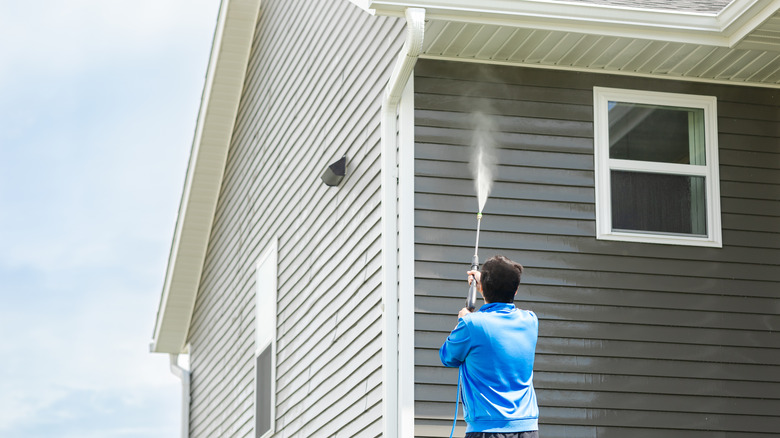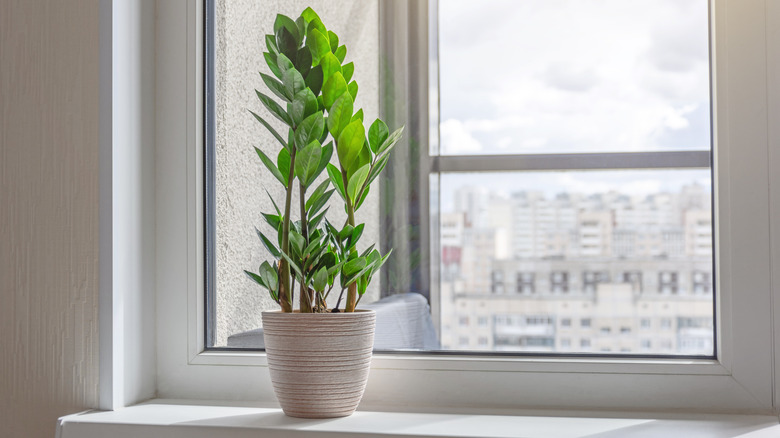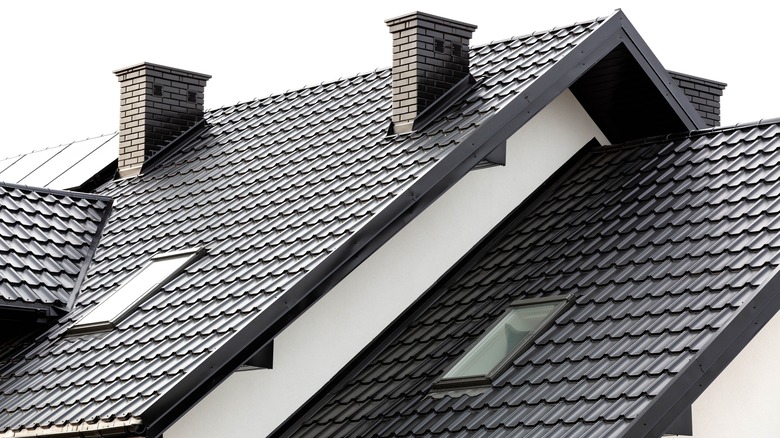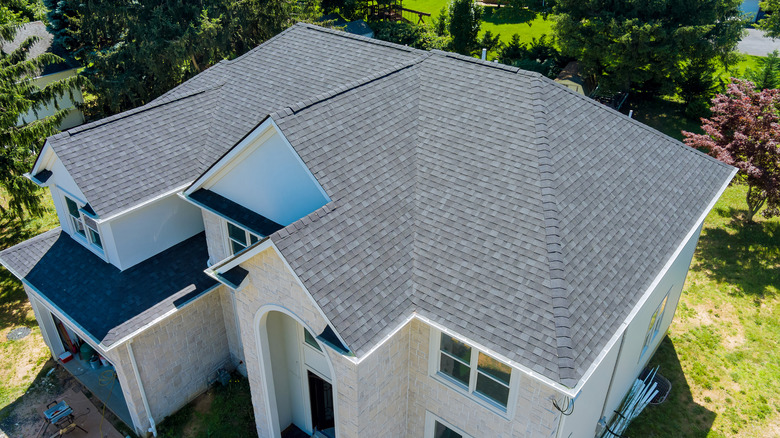5 Ways To Tell Your Home's Exterior Is Full Of Hidden Mold
Mold is a fungus that grows in damp spaces that are cool and dark. It is important to get rid of it as soon as possible because it is a health hazard. If mold goes undetected, it will continue to grow throughout the home, exposing families to the spores as they breathe. Depending on the type of mold, it can cause symptoms similar to colds, respiratory diseases, or even harm one's wellbeing, according to the United States Environmental Protection Agency. People with allergies or asthma are at a higher risk of developing symptoms when exposed to mold. These symptoms include watery eyes, runny nose, dizziness, headaches, and memory loss.
Mold grows through its airborne spores, so it can quickly spread throughout the home with too much moisture. Since it needs moisture to survive, it is often found in air conditioning units, heating systems, and air vents. Once mold has made its way into the house, it can readily travel through the ducts in one of these spaces.
1. Look for musty smells and fuzzy surfaces
Finding hidden mold in and around your home can be tricky. However, you may find it easier if you have a good sense of smell. A continuous musty smell is a sign of the fungi. Recognizing and tracking down the source of this smell is easier inside a home than on its exterior. In the case of mold on the outside of the house, pay attention to which way the wind is blowing when you smell something musty. Where the wind is blowing from can help locate the mold. A musty smell can be described as stale, unpleasant, earthy, or damp.
If the mold is visible on the exterior surfaces of your home, it can often be identified as fuzz, and it can be black, white, orange, green, or brown. Mold will also appear as a stain or specks of color, according to Service Master Restore.
2. On and under siding
The siding of a building is the most popular place for mold to grow on the exterior of a home. It can appear on the surface of the siding or its butt joints. Cracks in sidings are another way that mold can thrive in that area. This isn't good because it allows the mold to develop and spread into the home. Mold will also cause the house to no longer be structurally sound, according to Beyond Exteriors. It feeds off of organic materials like wood, making it rot away. If mold is left unnoticed for enough time, it can cause floors, ceilings, and walls to collapse.
When water is constantly dripping out of air conditioning units or faulty gutters, mold can begin to grow on the siding of a house. You will also confirm its presence on your siding if you see faint discoloration or cracks on the siding. There may also be a musty smell when you are around the exterior of your home.
3. Windows and windowsills
Windows and windowsills are other places where mold can accumulate on the exterior of a home. You may not even notice its presence on your windowsills — and it doesn't just resemble dirt — unless you're looking for it specifically. Since mold grows in areas that are moist, these two areas are places that are highly likely to harbor mold, according to Molekule.
Windows are often covered in condensation when the temperature inside the house is cold from the air conditioning on a hot and humid summer day, which typically promotes its growth. If the home is located in a place that rains often, the windowsills are susceptible to mold from the constant water puddling on them and never having the chance to dry. As long as there's moisture on the window or windowsill, there will be a possibility for mold to grow in that area. This is why adding these two areas to upkeeping duties is essential.
4. Fireplaces and chimneys
Fireplaces and chimneys are places where mold can begin growing on the exterior of a home, moving to the inside if left alone. These areas are more at risk of these fungi if they aren't used regularly or if the chimney cap is broken. Fireplaces and chimneys are susceptible to growing mold because they are damp, dark, cool, and made of brick. Bricks are made of a porous material that will hold moisture and make a perfect place for mold to grow in its many little holes.
It's essential to repair any broken or rusted chimney caps because when they aren't working properly, they can allow rain or snow to go into the flue. If this moisture makes its way inside mold will begin to grow and spread. Doctor Flue explains that a way to tell if there is mold hiding in your fireplace or chimney is if the wind smells funky depending on the direction it is blowing.
5. Roofs and attics
Like fireplaces and chimneys, roofs and attics can harbor mold, too. These areas are similar because when moisture enters, it creates the perfect place for the fungus to thrive. Unless you are looking for mold, you may not even know that it is growing happily in those areas. This can be dangerous because Molekule explains that most of your ventilation system is located in the attic. If mold is left to grow and it reaches the ventilation system, its spores can become airborne and spread all over the home, leaving your family susceptible to the many health issues it brings.
To prevent this from happening, the roof should be inspected for leaks, and if any are found, they should be repaired as soon as possible. Checking from inside the attic should also be done, especially looking around the soffit vents for leaks. The growth of mold can be prevented or stopped if moisture cannot build up.





